I have always loved to read books to children and to sing with them. What could be better than putting the two together? When we read to children, they see the pictures, they follow along with the story as it unfolds, and they ponder what might happen if things went this way or if things went the other way. When we sing with children, they internalize the patterns of the tunes and the words, if there is a chorus. They anticipate what might happen musically. Combining singing or music with the written word is so good for young brains and is so much fun!
Being right there in person with children and books is always best, I believe, but online gifts can’t be ignored. So, I’ve cited a few YouTube treasures along with these book reviews.
Let’s start with an old favorite:
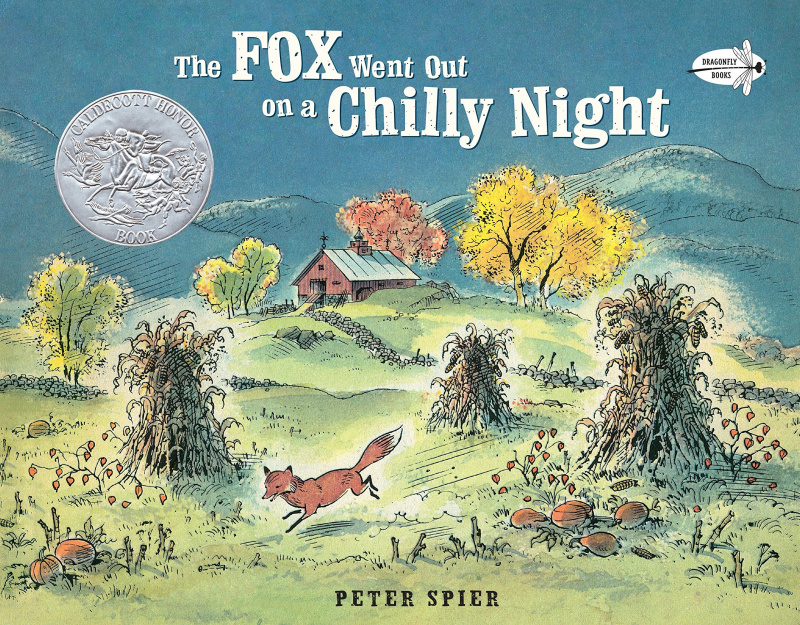
The Fox Went Out on a Chilly Night, illustrated by Peter Spier, first published in 1961, Doubleday Books for Young Readers. Color pictures are set on pages opposite black and white pictures. This is a Caldecott Honor book. In 2013, Spier added color to the black and white drawings. His watercolor paintings are gorgeous and full of the tiny, intriguing details that Spier’s art is noted for. They are inspired by a trip he took to Vermont in the fall. The painting of the fox grabbing a goose and slinging a duck across his back is amazingly full of flapping and feathers. On the page where the music is printed, a really funny painting illustrates the foxes and some geese singing together around a piano.
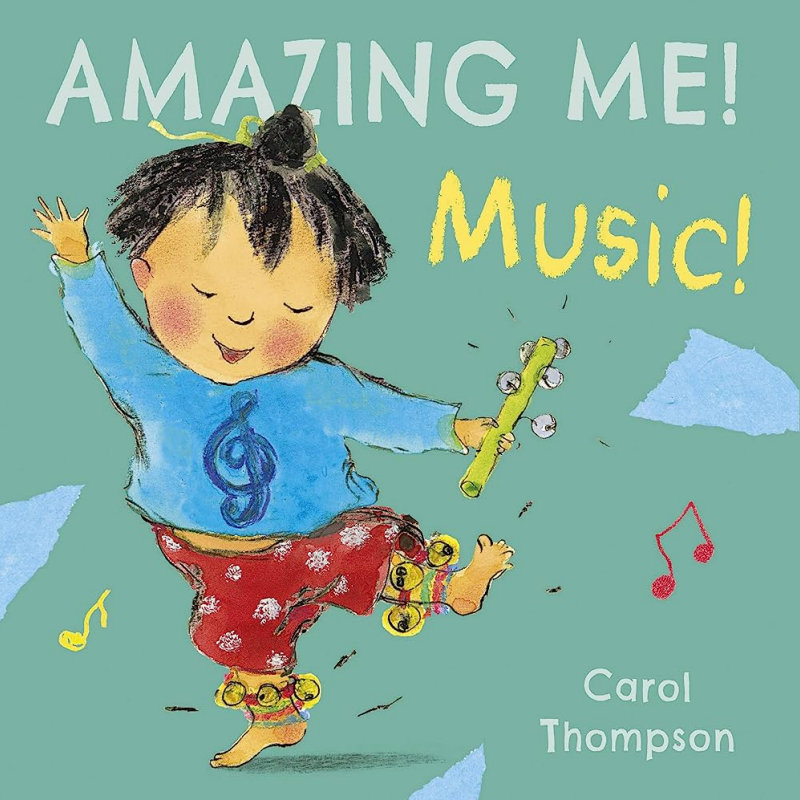
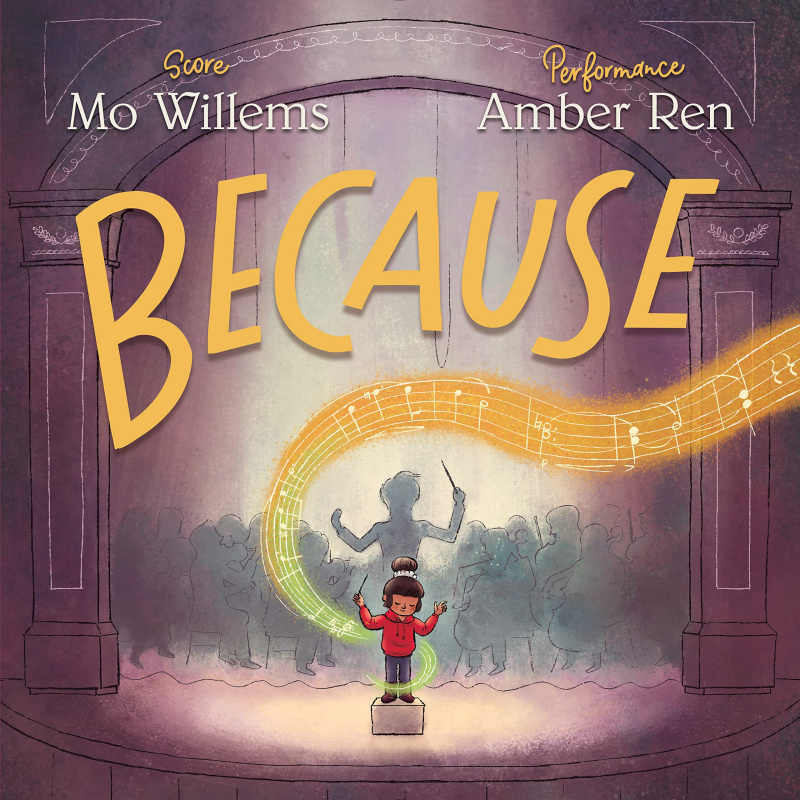
Amazing Me! Music! by Carol Thompson, Child’s Play International, 2019. This simple and delightful board book has lovely pictures of many diverse children having a wonderful time playing instruments, singing, and moving to music.
Because, written by Mo Willems, illustrated by Amber Ren, Hyperion Books for Children, 2019. This book is about inspiration, from Beethoven to Schubert to a girl who, by good luck, attended a symphony orchestra concert and was changed. This happened because of the musicians who practiced, because of the train conductor who brought them to the concert hall, because of the workers who made posters and cleaned the hall, because of the ushers, and the orchestra conductor. The pictures show the inspiring music flowing through every page. Schubert’s music is on the front end paper and Hilary Purrington’s composition, “The Cold,” is featured on the rear end paper. You never know what will inspire a child!
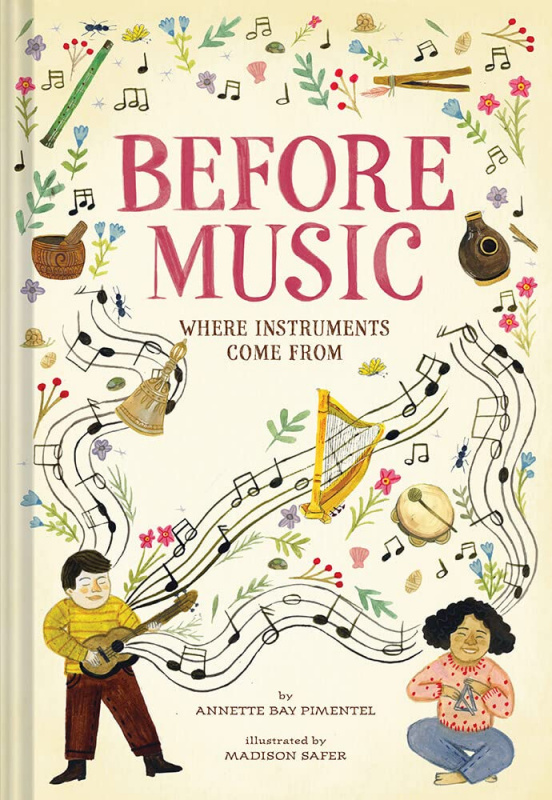
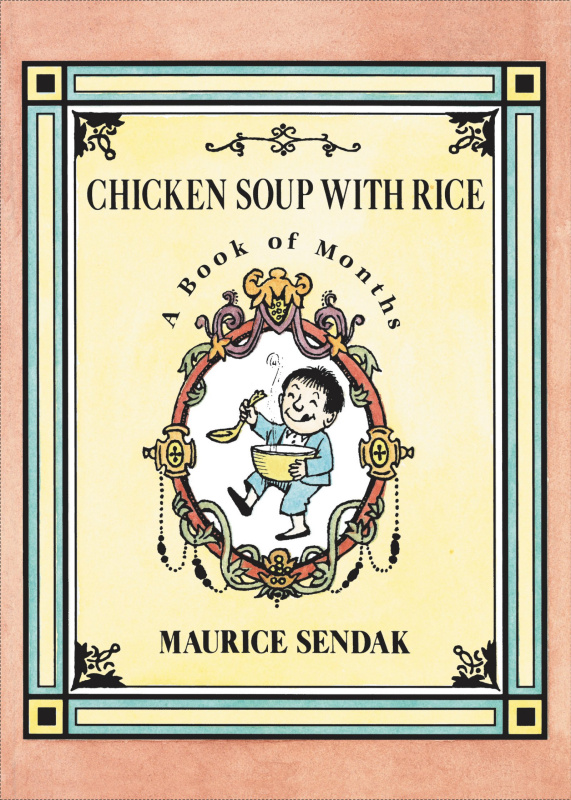
Before Music: Where Instruments Come From, by Annette Bay Pimentel, illustrated by Madison Safer, Abrams Books for Young Readers, 2022. Discover how music is made in this survey of musical instruments from around the world. The instruments are organized by material, from wood to gourds to found objects and more, and there is a ton of information for curious readers. The sidebars offer much more to discover, including extensive instrument lists and short bios of musical innovators.
Chicken Soup With Rice: A Book of Months, by Maurice Sendak, Harper Collins, 1962, and the “Chicken Soup With Rice” song by Carole King on her Really Rosie record album, 1975. This charming poem takes us on a romp through the year, with delightful illustrations showing how to use or enjoy chicken soup with rice in twelve fun-to-imagine ways.
In January it’s so nice
While slipping on the sliding ice
To sip hot chicken soup with rice
Sipping once, sipping twice
Sipping chicken soup with rice
. . . all the way through December. Carole King’s song, based on the little book in Sendak’s Nutshell Library series, is very catchy and hard to forget. Both can be enjoyed in this “Chicken Soup With Rice” video, excerpted from the Really Rosie half-hour animated television special, originally aired in 1975. The special comprised several other Sendak titles set to King’s music and later was adapted for the stage.
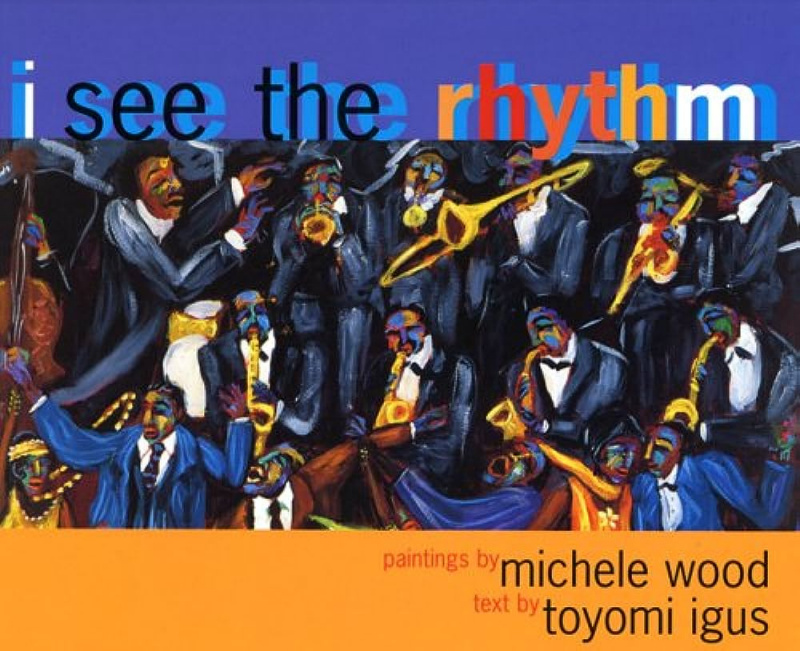
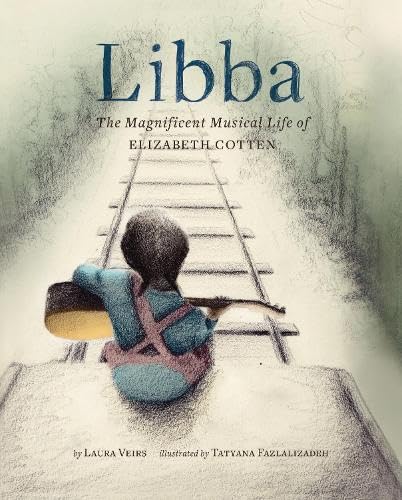
I See the Rhythm by Toyomi Igus, paintings by Michele Wood, Children’s Book Press, 1998. This book offers a look at the history of African American music through the eyes of an artist. As Michele Wood painted, she listened to the different styles of music and imagined herself back in the times when the music was created. Toyomi Igus listened to the music and looked at Michele’s paintings and was inspired to write poems about each musical scene over the past four hundred years. The styles include spirituals, blues, ragtime, jazz, swing, bebop, gospel, rhythm and blues, rock and roll, hip-hop, and funk—what a rich diversity!
Libba: The Magnificent Musical Life of Elizabeth Cotten, by Laura Veirs, illustrated by Tatyana Fazlalizadeh, Chronicle Books, 2018. This lyrical, loving picture book tells the story of the determined, gifted, daring Elizabeth Cotten (1893–1987). As a little girl, she taught herself how to play her brother’s guitar—upside down and backward, because she was left-handed. At age eleven, she wrote “Freight Train,” which became one of the most famous folk songs of the twentieth century. She was discovered by the folk-singing Seeger family while working for them as a housekeeper. By the end of her life, people everywhere knew her music. The message of never giving up on a dream, no matter the circumstances, will resonate deeply with readers.
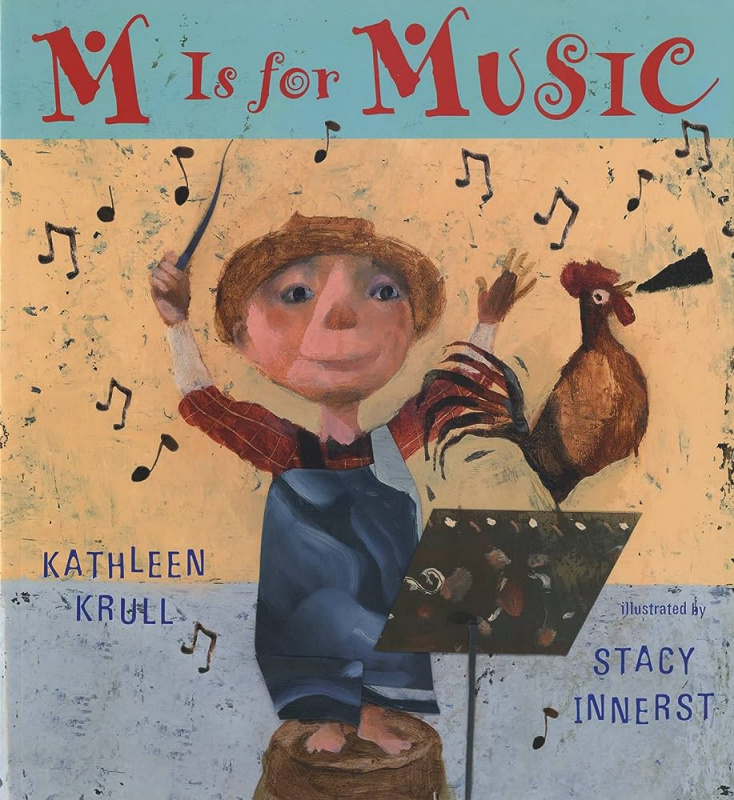
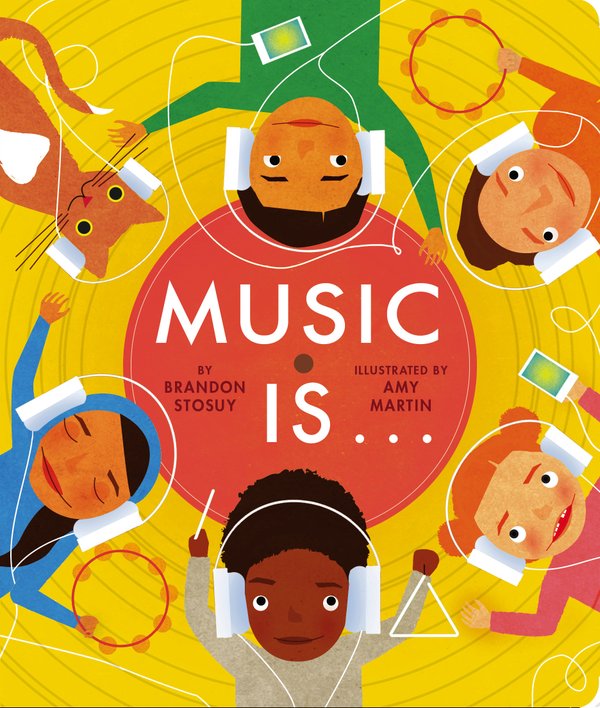
M Is for Music, by Kathleen Krull, illustrated by Stacy Innerst, Harcourt Children’s Books, 2003. This alphabet book, going from Aa is for anthem and accordion to Zz is for zydeco, zither, and all forms of zippy music, is a treasure trove of varied music words. On many pages, there are words I had to look up, like zapateado and zarzuela. The words are hidden in creative ways within the illustrations, so each page calls for a treasure hunt amid fascinating and funny pictures.
Music Is . . ., by Brandon Stosuy, illustrated by Amy Martin, Little Simon, 2016. This Spanish/English bilingual board book is not just for the youngest children. The many varieties of music—for example, loud and quiet, sad and happy, a capella and instrumental, old and new, acoustic and electric—are illustrated with vivid colors, both abstract and accurate. This Music Is . . . video uses mainly classical selections, but there are also examples of pop, folk, ragtime, jazz, and electronic music. The conclusion is that music is definitely for you.
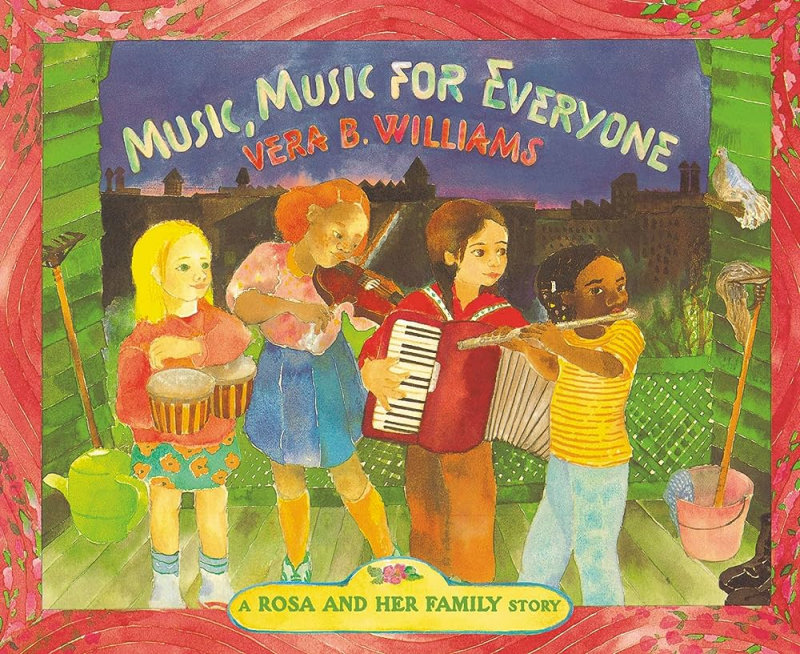
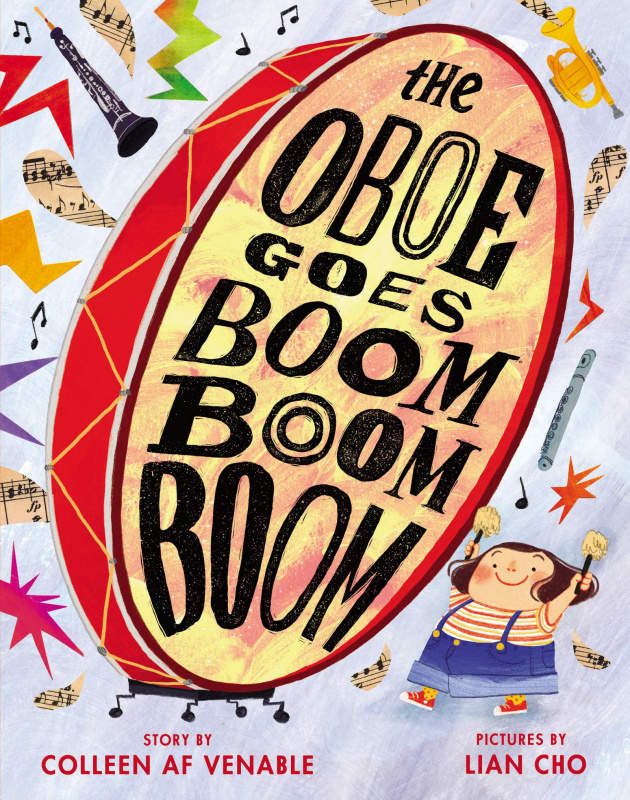
Music, Music for Everyone, by Vera B. Williams, Greenwillow Books, 1988. The narrator of this lovely picture book plays the accordion, along with her friends, who play the drums, flute, and fiddle. They form the Oak Street Band, and they practice until they can play for a big neighborhood party, where everyone dances outside. The narrator uses the payment she gets to help her family take care of her ill grandmother.
The Oboe Goes Boom Boom Boom, by Colleen A. F. Venable, pictures by Lian Cho, Greenwillow Books, 2020. A drummer constantly interrupts the description of all the other band instruments. Each instrument has its construction, technique, and sound described in interesting detail and fetching images. Words, art, and music interact, each having a variety of tones, punctuations, harmony, and colors.
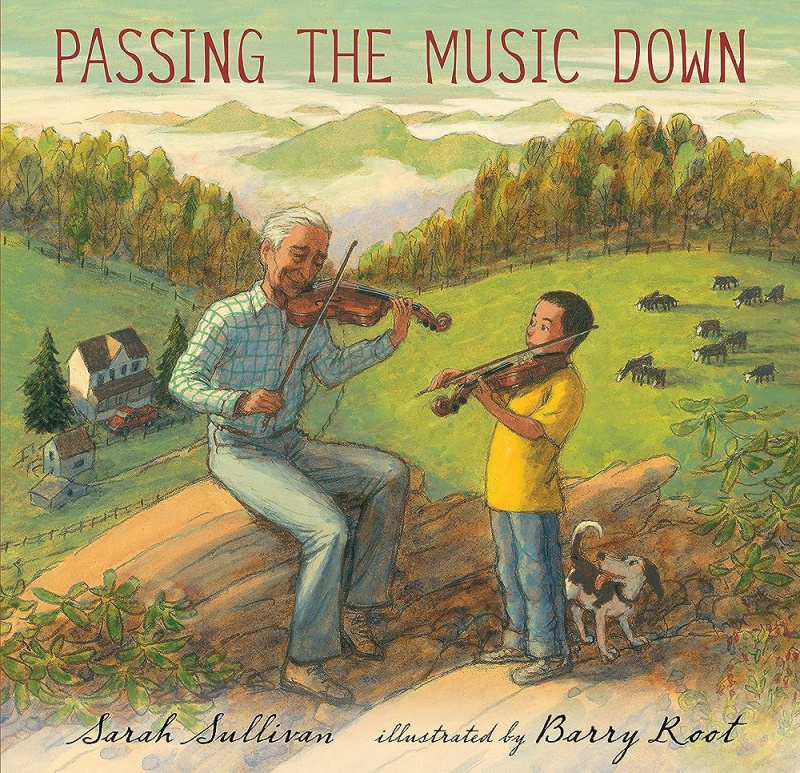
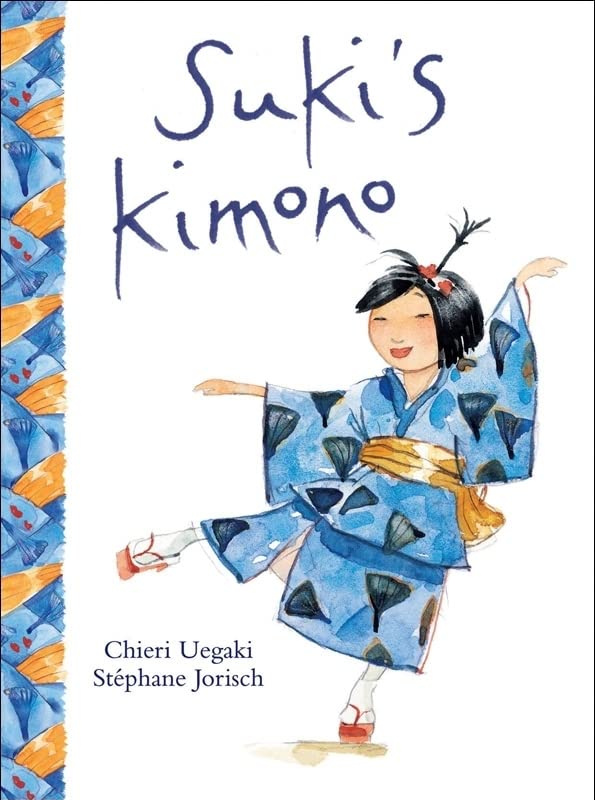
Passing the Music Down, by Sarah Sullivan, illustrated by Barry Root, Candlewick Press, 2011. This is a warmhearted ode to an American musical tradition and to generational ties, told in lyrical free verse with atmospheric illustrations. Travel with a young boy to the hills of Appalachia to meet his hero, an old-time fiddle player, and see how their friendship creates a bond between generations. Inspired by the lives of renowned fiddlers Melvin Wine and Jake Krack, the book includes a note from the author and suggests resources for researching the music and musicians who inspire us.
Suki’s Kimono by Chieri Uegaki, illustrated by Stéphane Jorische, Kids Can Press, 2005. It is the first day of school, and although her older sisters wanted to look cool and fit in, Suki decides to wear the kimono and wooden clogs her grandmother had given her. While some children snicker and stare, Suki does not respond. She tells the class and the teacher about the Japanese festival she and her grandmother had attended, and then she dances. Everyone is quiet, and Suki is worried, but then the teacher starts to clap, and the whole class joins in. Suki dances all the way home from school that day. The pictures are beautiful, and this emotional story is very powerful.
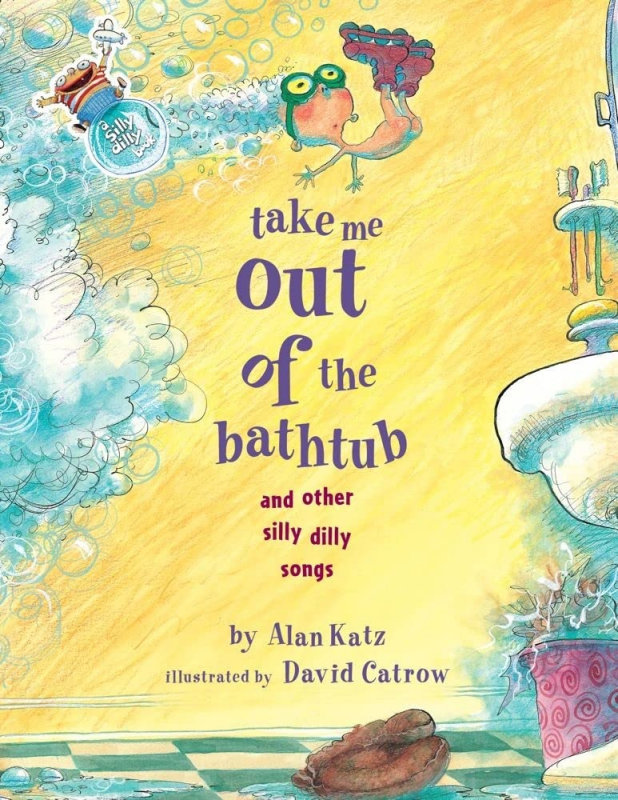
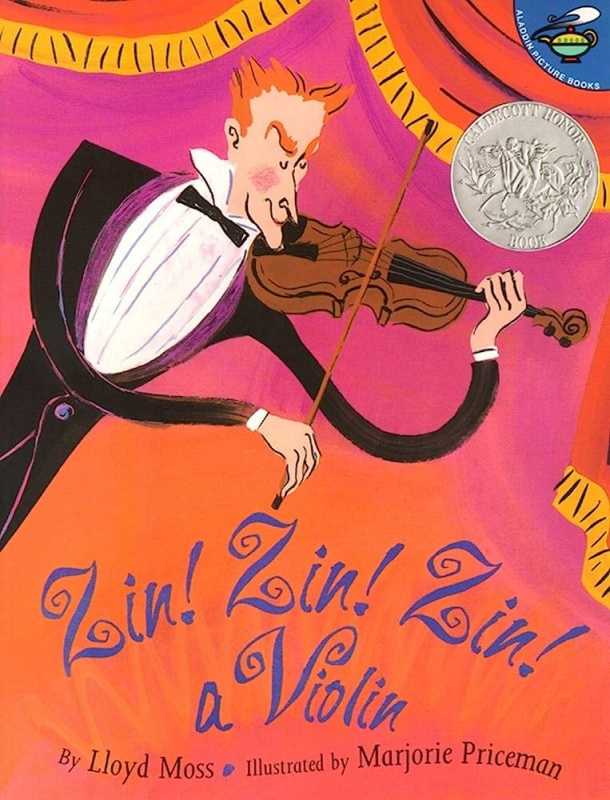
Take Me Out of the Bathtub and Other Silly Dilly Songs, by Alan Katz, illustrated by David Catrow, Margaret K. McElderry Books, 2001. I hope that families today are singing “Take Me Out to the Ballgame,” “I’ve Been Working on the Railroad,” “Home on the Range,” and “Twinkle, Twinkle, Little Star” the same way we elders did with our children long ago. This book changes all the words! “I've Been Cleaning Up my Bedroom,” “Give Me a Break,” and “Stinky, Stinky Diaper Change” are the really silly new words to the previous songs. The illustrations are as zany and spirited as the words.
Zin! Zin! Zin! A Violin by Lloyd Moss, illustrated by Marjorie Priceman, Simon and Schuster, 1995. A lone trombone plays a solo—but soon a trumpet joins, then a French horn, and so on, until the entire chamber group of ten is assembled on stage. Each instrument has its own poem as it joins in the music. The artwork is playful and flowing, and a mouse, cat, and dog add to the fun.
I found most of these books at the Kellogg-Hubbard Library in Montpelier, Vermont, and I am very grateful to the librarians there, who always help me find what I need. Please go to your local library and look for and ask for more books about singing and music.